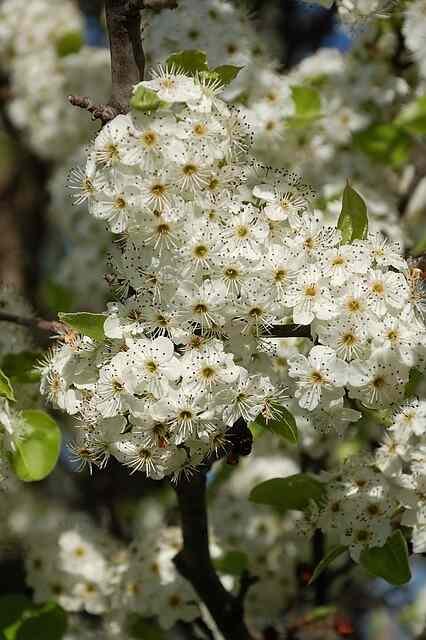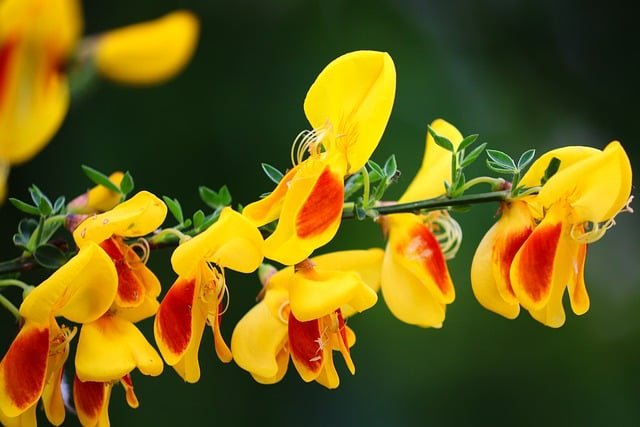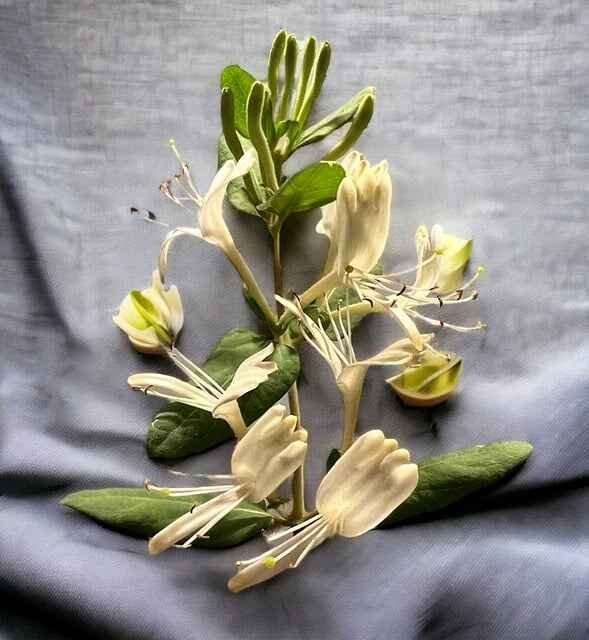As grounds-keepers, we as a whole know the excitement of meandering through a nursery place, our eyes extending at every one of the lovely plants that would add tone and interest to our scenes. Nonetheless, in the midst of this plant heaven lie a couple of quiet trespassers. These plants may at first seem innocuous, yet they have an intrusive nature that can unleash devastation on your nursery as well as represent a danger to local territories and biological systems.
Hello, I’m going to share a list of eleven plants that you should never purchase from a garden center.
Invasive Plants Before we get started, I want to make it clear that some of these plants may be regarded as invasive in one region but not another.
Chameleon

Plant It pains me to admit that the first plant on this list is one with which I have far too much prior experience. I saw this plant at the nursery community and experienced passionate feelings for its extraordinary variety example, and I brought it home. I wish I would have known in those days what I know now. I have been attempting to destroy this error for more than 10 years. I might want to acquaint you with my main adversary, the Chameleon Plant, otherwise called Houttuynia. Try not to allow its brilliant foliage to trick you! This plant spreads overwhelmingly, springs up pretty much all over, and is truly challenging to kill. I was shocked to see this plant available to be purchased at a neighborhood garden focus only half a month prior. It can spread quickly through underground rhizomes that are extremely delicate and break without any problem. In this way, regardless of whether you assume you have pulled everything up, it will resprout from the root foundation. On the off chance that you like the vibe of its brilliant foliage, a decent option would be anything in the coral chimes or foamflower family. They are accessible in a wide exhibit of varieties and structure little bunches of foliage that stay smaller to give tone and interest to the front of the line. They can likewise be utilized as ground cover.
Lily of the Valley

The second plant on my rundown is another occupying an excessive amount of room in my nursery. This plant is lily of the valley. It might look blameless, yet it can spread forcefully through underground rhizomes, which may adversely influence local plant populaces. Also, all pieces of this plant are extremely harmful. This plant is still regularly accessible in garden habitats in certain states, while different states show it as an obtrusive plant in light of its propensity to frame huge settlements rapidly. Despite the fact that this plant is considered an image of favorable luck, I have had no karma killing it from my enduring bed. In the event that your eyes are attracted to the lovely ringer molded blossoms, a couple of good options would be snowdrops, white bellflower, or white inflatable bloom. All are low-developing and can give spring or summer sprout.
Butterfly Bramble

One more exceptionally famous enduring plant on this rundown is the Butterfly Hedge. This is one of my number one plants in view of its appealing blossoms and capacity to draw in valuable pollinators. In any case, this plant can self-seed and effectively attack open spaces and group out local plants. Furthermore, the wild species might actually attack riverbanks and reforested regions. The Butterfly Shrubbery is viewed as obtrusive in many states, as well as Britain and New Zealand. A few states, similar to Oregon, have even restricted deals of the plant. In any case, ongoing reproducing is acting the hero. Cultivators have created seedless and sterile assortments that may likewise be accessible at your nursery community. Search for the reserved series called Lo and View or Flutterby. While shopping, make certain to do all necessary investigation and give inclination to those assortments that are recorded as sterile or seedless.
Callery Pear

As I talked before, the decorative callery pear, frequently alluded to as Bradford, Cleveland Select, or Chanticleer, has an obtrusive side. At the point when the tree was first put available, it was accepted to not be able to replicate by seed. In any case, as cultivars cross-pollinated, attainable seeds were made, and the tree spread inside neighboring scenes and other ordinary areas. Local species, which nearby natural life, butterflies, and different pollinators intensely depend on, are being invaded by the trees as they spread. It has become so intrusive that a few states have made it against the law to develop, sell, and plant these trees. Serviceberry, eastern redbud, and flowering dogwood are a few safer alternatives to the callery pear.
Bamboo

Fifth on our rundown is bamboo. It is renowned for its adaptability and rapid growth habit, quickly developing into a lovely privacy hedge. However, when planted, this quick cultivator can turn out to be inconceivably intrusive with complex root foundation can spread and develop underground, conveying sprinters up to 100 feet away. This implies your new bamboo fix may unexpectedly turn into your neighbor’s new bamboo fix also, and afterward their’s neighbor, etc. Furthermore, this incredibly fiery plant is exceptionally difficult to kill whenever it has dominated. The kind of bamboo being referred to is running bamboo, and as noted, it can debase regular regions and uproot local plants. Then again, clustering bamboo develops precisely as its name proposes in a bunch and regularly remains where you have established it. This type would be recommended as a respectful bamboo in the scene. It is genuine polite, and its steady but sluggish spread is caused by its root foundation circling the parent plant.. Assuming you really do anticipate adding bamboo to your scene, do all necessary investigation and be sure which species you are planting. To keep this obtrusive plant out of your scene, attempt any of the tall and upstanding elaborate grasses accessible at the nursery community. Or on the other hand, in the event that a security fence is what you desire, arborvitae, cedars, and junipers would be generally great decisions.
Consuming Hedge
Up next is the Consuming Hedge. This very famous fancy bush with lively red fall tone is normal in scenes and business plantings. It is now considered a threat in some areas due to its capacity to invade natural areas and outcompete native plant species that provide local wildlife with both food and shelter. Along the East Coast and a lot of the Midwest, this shrub is now common. A couple of states, like Massachusetts and New Hampshire, have limited the proposal of this shrub. Luckily, there are a great deal of uncommon choices that give tantamount assortment and interest in the scene. The two blueberries and oakleaf hydrangeas highlight brilliant red fall tone close by appealing blooms and multi-season interest. Red twig dogwood is one more choice for both fall foliage tone and proceeded with interest through the colder time of year with its splendid stems.
Barberry

One more well known and normal scene bush on this rundown is the barberry. This diminutive shrub with purple or red foliage has broken out of its original place in the landscape and is now regarded as a highly invasive species in some regions, particularly eastern North America. Birds will eat the products of this plant and disseminate the seed, framing invulnerable bushes that shade out wildflowers and other local plants. What’s more, to exacerbate the situation, the Japanese barberry has made a general wellbeing concern. Playing a part in the spread of Lyme disease has been shown. An investigation discovered that the bigger the quantity of barberry in a space, the higher the rate of Lyme sickness conveying ticks. Along these lines, this extraordinary plant can affect what is happening as well as our thriving. Rather than the barberry, there are more secure options with similar purple or red foliage tones. Weigela or ninebark arrangements are among these.
Scotch Broom

The cheerful yellow flowers of Scotch Broom might pique your interest at the garden center. Despite the fact that it is viewed as a fleeting plant, it is terrible information! Besides the fact that it spread forcefully and stifle out can local plants, yet it produces a poisonous synthetic in the dirt that might deny different plants from developing. Furthermore, untamed life find the bush disagreeable and might be driven from a territory surpassed by this bush. It has ended up being less forceful in the East than in the West, where they are recorded in a few states, including California, Washington, and Oregon, as obtrusive weeds. A full grown plant can deliver as many as 12,000 seeds each year, so it’s no big surprise this plant is on the rundown. Luckily, there are a lot of pretty yellow blossoming choices for your scene other than the Scotch Brush. You might think about the yellow wild indigo, also known as baptisia, or any of the striking yellow azaleas that bloom in spring.
English Ivy

Following up is English Ivy. As of now, when I consider English Ivy, I consider an old block building campaigned in this plant, making it look excellent and critical. Various nursery laborers moreover use this popular plant as a ground cover, especially in locales with stores of shade. Anyway, this non-nearby plant is by and by saw as prominent in many states. Its powerful advancement can cover nearby vegetation and hurt wide ordinary areas, walls, and plans, as it duplicates quickly by the two runners and seeds dissipated by birds.Regardless, the best course of action is to never lay it out because it is so difficult to demolish. Ground covers and plants that are not however forceful as English ivy seem to be accessible available. One such plant that would offer old-world energies would be the climbing hydrangea.It has green reflexive leaves with a woody base and huge white lacecap blossoms. Moreover, it grows slowly and is easy to stay aware of as it creates.
Japanese Honeysuckle

By and by we progress forward toward the Japanese Honeysuckle. In our area, honeysuckles are climbing plants whose spring blossoms are delightfully fragrant. In any case, their close by cousin, the Japanese honeysuckle, is a prominent weed that can take command over your nursery, smother the advancement of nearby plants, and finally hurt the environment around it. They are spread to various locales by birds who love to gobble up their berries. Honeysuckle management is a never-ending challenge in southern and Midwestern states, but the vines are fortunate to be controlled by freezing winter temperatures in cold northern climates. It is by and by recorded as an outrageous risk in Kentucky, Tennessee, and South Carolina, is a top prominent plant in both Georgia and Florida, and is seen as a noxious weed in various New England states. Look out for this one, whether it is inebriating you with its wonderful scent.
Mexican Night Primrose
To wrap things up, the Mexican Night Primrose. This plant’s sensitive pink blossoms might allure you, however it can rapidly outgrow control. This yellow night primrose cousin has been known to rule lush yards and outcompete other blossoming plants in a bloom bed. Both the strength for and seed areas spread them. Whether or not the plant is pulled or disturbed in any way, new advancement will happen from the root establishment, making it extremely testing to control. This plant isn’t really remembered to be prominent, but there have been a satisfactory number of complaints against it to make this overview. Dianthus, unending geranium, and creeping phlox would all make awesome low-creating choices rather than this pink blooming ground cover.
We trust this information has uncovered a couple of understanding into the normal gamble of explicit plant species and we trust it helps you with chasing after additional informed decisions for your nursery space.



